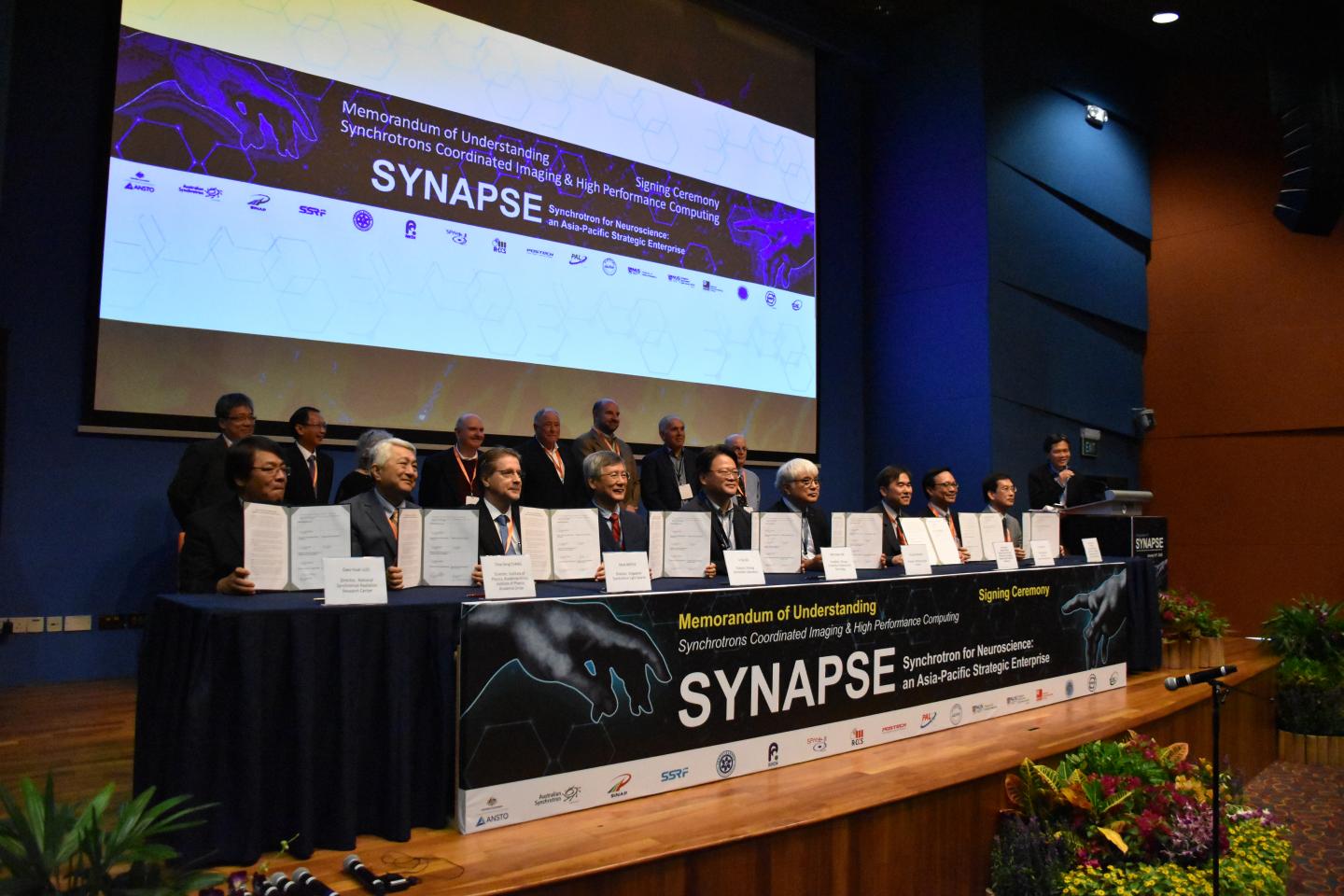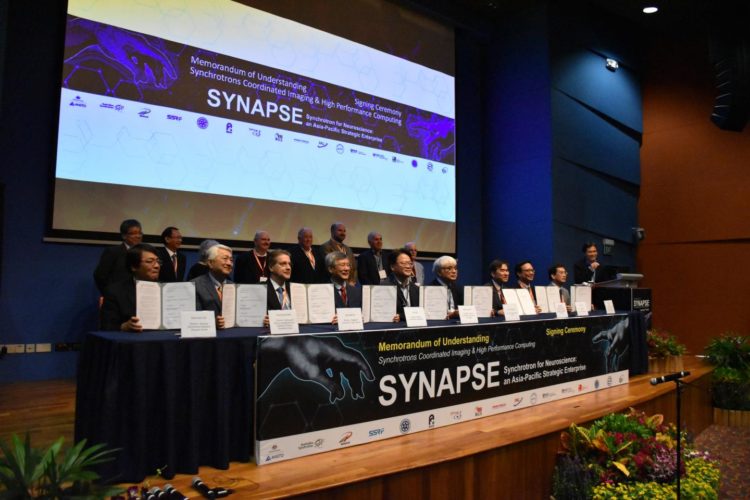New mapping technique using powerful x-ray technology will provide clear and detailed images of the brain and aid development of more effective treatments for neurodegenerative diseases

Credit: NUS Yong Loo Lin School of Medicine
Singapore, 15 January 2020 – Scientists from the National University of Singapore (NUS) are working as members of an international team to produce a first-of-its-kind ultra-high resolution 3D comprehensive map of the human brain’s neural network. The effort involves teams from Singapore, Japan, South Korea and Taiwan. Australia and China have also expressed interest to be part of the project. Initiated at NUS, the Singapore team, comprising researchers from the local scientific community, will use synchrotrons – extremely powerful x-ray sources – to trace the complex and intricate networks that cover the brain.
Associate Professor Low Chian Ming from the NUS Yong Loo Lin School of Medicine’s Department of Pharmacology and Department of Anaesthesia is a co-founding member of this international consortium, and leads the team from Singapore. The team will work to construct the map of the human brain and coordinate the data management for this endeavour.
The work will link the synchrotron facilities in the Asia Pacific region under a collaboration called Synchrotron for Neuroscience – Asia Pacific Strategic Enterprise (SYNAPSE), which is expected to involve more than 1,000 researchers. Launched today at the NUS Shaw Foundation Alumni House Auditorium, the founding members of the initiative signed a Memorandum of Understanding (MOU) committing to work together to complete their brain map project by 2024.
Faster, crystal clear images of the brain
Each participating facility will work on a portion of the same brain. Using synchrotron x-rays, the SYNAPSE partners will image the brain network on a scale of 0.3 micro-metres, with an image being taken at the speed of 1 cubic millimeter per minute. The overall data acquisition and processing speed is more than 10 times faster than any other current method (such as super-resolution microscopy or Magnetic Resonance Imaging (MRI), according to Assoc Prof Low. He estimates that it will take the SYNAPSE collaboration about four years to map a human brain; other methods would take as long as the lifespan of an average person.
SYNAPSE will complement the structural map constructed from x-ray imaging with subcellular and molecular information from other advanced imaging techniques such as infrared spectromicroscopy, super-resolution visible-light three-dimensional microscopy and cryo-electron tomography. This coordinated approach will provide ultra-small structural details of the entire brain, analogous to the detailed features of Google Earth images. By contrast, other current maps of the human brain only capture certain specific areas.
SYNAPSE will enhance the understanding of the structure of the brain and the composition of its various structures, clarifying the normal functions and helping to identify the causes of brain diseases.
As mapping a human brain will generate a huge amount of data, a second MOU was signed today by the SYNAPSE members to implement a High Performance Computing network to rapidly process, store, mobilise, access, and analyse such data. Singapore, which will leverage the petascale supercomputing resources at the National Supercomputing Centre (NSCC), will be the data hub of SYNAPSE. The data hub will link all the SYNAPSE partners via the established high-speed 100G international network connections of the Singapore Advanced Research and Education Network (SingAREN).
In parallel, the Singapore team will conduct its imaging work at the Singapore Synchrotron Light Source (SSLS) facility located in NUS.
“Globally, brain mapping has gained impetus due to the growing impact of brain diseases. What we are setting out to do is a world-first enterprise. The images captured with unprecedented speed, clarity and granularity by SYNAPSE will form an extensive human brain map. They will show how neurons are connected and how they interact to result in cognition and intelligence. Our findings could potentially contribute to effective treatment for increasingly important neurodegenerative pathologies such as Alzheimer’s disease and other forms of dementia,” Assoc Prof Low explained.
An International Advisory Board (IAB) including experts from neuropathology, electrophysiology, cell biological approaches and imaging has also been established to support SYNAPSE and assure its scientific excellence.
###
Media Contact
Gwen Khoo
[email protected]
65-677-23783
Original Source
http://nusmedicine.





